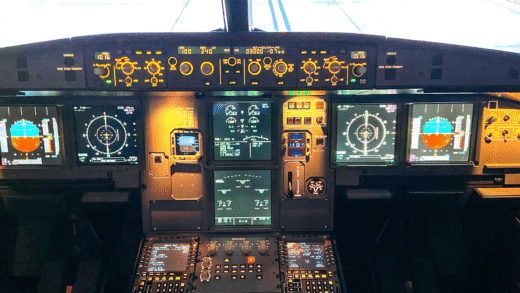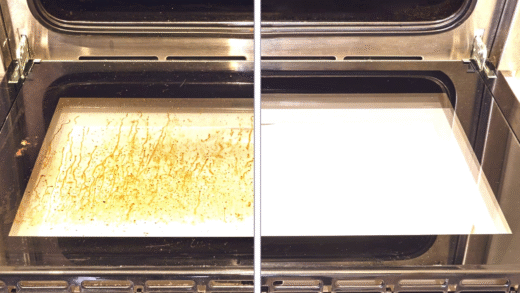3-D printing is revolutionizing automotive manufacturing, especially with the U.S. government’s initiative to produce classic muscle cars like the Dodge Charger. This technology promises reduced costs, increased customization, and environmental benefits through minimized waste. Challenges remain, but the potential for innovation and sustainability is significant as the automotive industry moves forward with these advancements.
Classic Muscle Car: The Chosen One
3-D printing in the automotive industry is taking a bold step forward with the U.S. government’s decision to 3-D print a classic muscle car. This initiative focuses on the iconic Dodge Charger, a symbol of American automotive culture since its debut in the 1960s. The Charger is recognized for its powerful engine, sleek design, and racing heritage, making it an ideal candidate for this innovative project.
The decision to choose the Dodge Charger highlights not only nostalgia but also a vision for the future of car manufacturing. By utilizing 3-D printing technology, manufacturers can create parts and even entire vehicles with greater efficiency and customization options. This approach allows for rapid prototyping, meaning modifications can be made quickly without the need for traditional tooling.
In conclusion, the choice of the Dodge Charger as the classic muscle car to be 3-D printed reflects both a tribute to automotive history and an exciting glimpse into the future of vehicle production.
Why the Government is All In
The U.S. government is investing heavily in 3-D printing technology for vehicles due to several compelling reasons. One primary motivation is the potential for cost savings. Traditional manufacturing methods can be expensive and time-consuming, particularly for small production runs. 3-D printing offers a more economical alternative, significantly reducing both material waste and labor costs.
Moreover, the government recognizes the strategic importance of fostering innovation within the automotive sector. By supporting 3-D printing initiatives, they aim to boost domestic manufacturing capabilities and enhance the competitiveness of U.S. automakers on a global scale. This investment aligns with broader efforts to modernize infrastructure and promote sustainable manufacturing practices.
Additionally, the environmental impact of 3-D printing vehicles is a crucial consideration. The technology can utilize recycled materials, minimizing waste and promoting sustainability. As the automotive industry faces increasing pressure to reduce its carbon footprint, 3-D printing presents a viable solution.
In summary, the government’s commitment to 3-D printing technology stems from its potential to save costs, stimulate innovation, and support environmental sustainability in the automotive sector.
Benefits of 3-D Printing in Cars
The benefits of 3-D printing in the automotive industry are numerous and significant. Firstly, one of the most prominent advantages is the ability to create highly customized parts. Manufacturers can tailor components to meet specific needs or preferences, allowing for a level of personalization that traditional methods cannot match.
Secondly, 3-D printing enables rapid prototyping. This means that new designs can be tested and modified quickly, accelerating the development process. As a result, automakers can bring new models to market faster, responding to consumer trends and demands with agility.
Another advantage is the reduction in inventory costs. With 3-D printing, parts can be produced on-demand, minimizing the need for large warehouses filled with spare parts. This shift not only saves money but also streamlines the supply chain, making it more efficient.
Finally, 3-D printing contributes to sustainability by reducing waste. Traditional manufacturing processes often result in significant material scraps. In contrast, 3-D printing uses only the material necessary for each part, promoting more responsible consumption of resources.
In conclusion, the benefits of 3-D printing in cars include customization, faster prototyping, reduced inventory costs, and improved sustainability, making it a transformative force in the automotive manufacturing landscape.
How 3-D Printing Works
3-D printing in the automotive industry involves a fascinating process that transforms digital designs into physical objects. This technology starts with a computer-aided design (CAD) model of the car or its components. Once the design is ready, the 3-D printer begins its work.
The process typically follows these steps:
- Layering: The printer builds the object layer by layer. Each layer is a thin slice of the final product, allowing for complex shapes that traditional manufacturing can’t achieve.
- Material Selection: Various materials can be used, including plastics, metals, and even recycled materials. This flexibility supports the production of lightweight and durable components.
- Post-Processing: After printing, parts may require finishing touches, such as sanding or painting, to achieve the desired look and functionality.
This method allows for rapid prototyping, meaning automakers can quickly test and refine designs. Unlike traditional methods, 3-D printing significantly cuts down production time and costs. With the ability to print parts on demand, manufacturers can respond swiftly to market trends, making the automotive sector more agile and innovative.
Oak Ridge National Laboratory’s Contribution
The Oak Ridge National Laboratory (ORNL) plays a pivotal role in advancing 3-D printing technology within the automotive industry. As a leading research facility, ORNL focuses on developing innovative techniques that enhance the capabilities of 3-D printing.
Key contributions include:
- Research and Development: ORNL conducts extensive research to improve the materials and processes used in 3-D printing. Their findings help optimize production efficiency and product performance.
- Collaboration with Industry: The laboratory collaborates with automotive manufacturers to implement 3-D printing solutions in real-world applications. This partnership bridges the gap between research and commercial production.
- Public Engagement: ORNL educates stakeholders about the benefits and possibilities of 3-D printing, fostering a broader understanding of its impact on the automotive landscape.
Through these efforts, ORNL not only contributes to technological advancements but also supports the U.S. government’s initiative to revolutionize automotive manufacturing.
Challenges in 3-D Printing Vehicles
Despite its promising advantages, 3-D printing in the automotive sector faces several challenges. Understanding these obstacles is crucial for the successful adoption of this technology.
Some of the main challenges include:
- Material Limitations: While various materials are available, not all are suitable for automotive applications. Researchers are continuously working to develop stronger and more versatile materials.
- Quality Control: Ensuring consistent quality across printed parts can be difficult. Variations in printing conditions can lead to defects, affecting the integrity of the vehicle components.
- Regulatory Hurdles: The automotive industry is heavily regulated. 3-D printed parts must meet stringent safety and performance standards, which can slow down the integration process.
Addressing these challenges will be vital for the future of 3-D printing in automotive manufacturing. By overcoming these hurdles, the industry can fully harness the benefits of this revolutionary technology.
Shaping the Future of Manufacturing
3-D printing in the automotive industry is reshaping the future of car manufacturing. This innovative technology allows for the production of parts directly from digital files, reducing the time and cost associated with traditional manufacturing processes. One of the most significant impacts of 3-D printing is its potential to streamline production lines, allowing for on-demand manufacturing.
As automakers adopt 3-D printing, they can respond more quickly to market demands and consumer preferences. This flexibility enables them to produce limited edition models or customizations without the hefty investments typically required for traditional tooling. Moreover, the ability to create complex geometries that were previously impossible with conventional methods opens new design possibilities.
The implications extend beyond just efficiency. The integration of 3-D printing into automotive manufacturing could lead to a shift in the entire supply chain, with local production reducing the need for extensive logistics and transportation. As the technology matures, we can expect to see more manufacturers embracing 3-D printing, fundamentally altering how cars are designed and built.
Environmental Impacts to Consider
3-D printing vehicles also brings environmental considerations to the forefront. One of the primary benefits is the reduction in material waste. Traditional manufacturing often results in excess materials that go to waste; however, 3-D printing utilizes only the necessary amount of material for each component. This capability not only minimizes waste but also promotes the use of recycled materials, contributing to sustainability efforts within the automotive sector.
Furthermore, the localized production facilitated by 3-D printing can lead to lower carbon emissions associated with transportation. By manufacturing parts closer to where they are needed, the carbon footprint of logistics can significantly decrease. Additionally, as the industry moves towards electric vehicles, the integration of 3-D printing can support the production of lighter components, enhancing energy efficiency.
In summary, the environmental impacts of 3-D printing vehicles can be largely positive, offering opportunities to reduce waste, lower emissions, and promote sustainable practices within the automotive industry.
Trends in Manufacturing and Technology
The move towards 3-D printing in automotive manufacturing reflects broader trends in technology and manufacturing practices. As industries increasingly adopt digital technologies, 3-D printing stands out as a key player in the shift towards Industry 4.0. This trend is characterized by the integration of smart technologies, automation, and data exchange in manufacturing processes.
Moreover, the U.S. government’s investment in 3-D printing technology signals a commitment to innovation and modernization. By fostering advancements in this area, the government aims to position the U.S. as a leader in the global automotive industry, encouraging research and development in cutting-edge technologies.
As we look to the future, the intersection of 3-D printing with artificial intelligence and machine learning could further enhance manufacturing processes. Automakers may soon leverage these technologies to optimize design and production, leading to more efficient and sustainable automotive practices. This initiative, therefore, is not just about printing cars; it is a glimpse into the future of manufacturing as a whole.





Comments are closed.